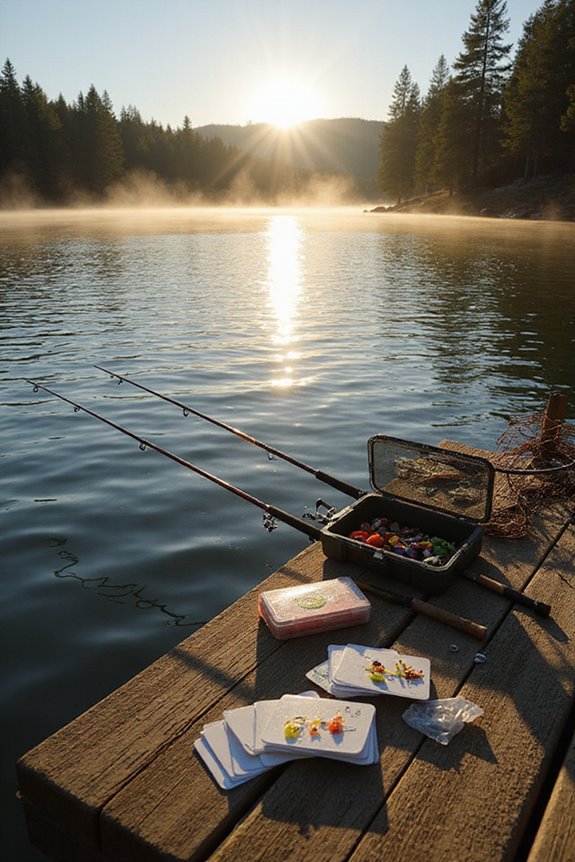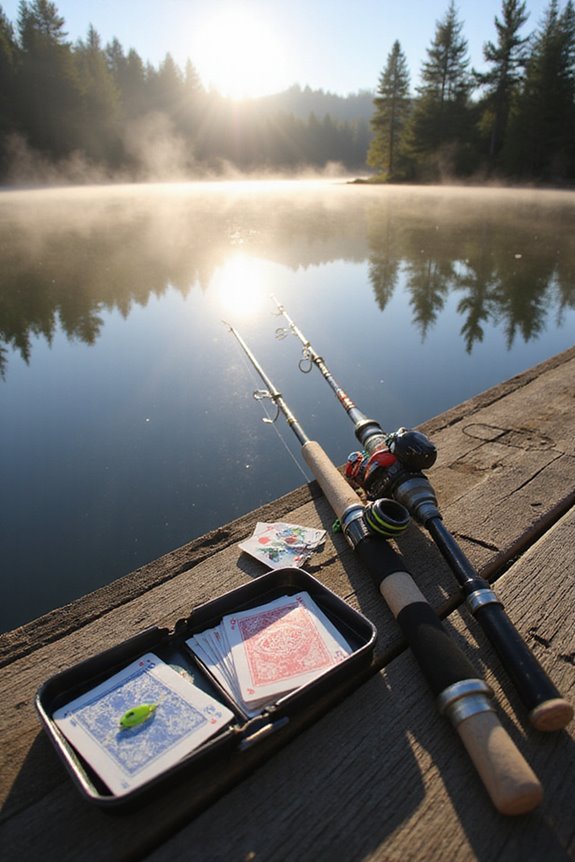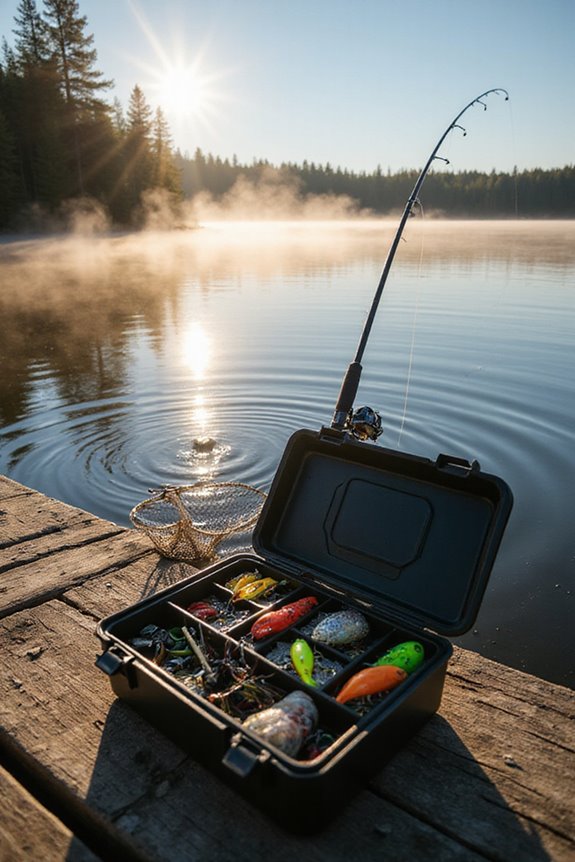To play Go Fish, gather 2 to 5 players and use a standard 52-card deck. Deal 7 cards each for fewer than four players or 5 each if four or more. The goal is to collect sets of four matching cards. On your turn, ask another player for a specific rank you hold. If they have it, they give you the cards; if not, they say, “Go Fish,” and you draw a card. To win, collect the most books. There’s much more to explore about strategies and detailed gameplay.
Key Takeaways
- Players take turns asking for specific ranks; if the asked player has cards, they must hand them over.
- If the asked player does not have the requested rank, they say “Go Fish,” and the asking player draws from the draw pile.
- A player collects books by gathering four cards of the same rank, laying them down face up for verification.
- The game continues until all 13 books are collected; the player with the most books wins.
- Players can strategize by using card counting and observing opponents’ actions to improve their chances of winning.
Setup and Objective
To set up a game of Go Fish, you begin by gathering your players and a standard 52-card deck, ensuring that jokers are removed. The ideal number of players ranges from 2 to 5, with 2 to 4 being most common. For fewer than 4 players, each player receives 7 cards during card distribution; if there are 4 or more, each gets 5 cards. The remaining cards form the draw pile, or “ocean,” placed face down in the center. Players typically arrange themselves in a circle for easy visibility and card passing. The objective of the game is to collect the most “books,” which are sets of four cards of the same rank. Understanding these initial game arrangements is essential for smooth play.
Playing the Game: Turn Order and Asking

Playing Go Fish involves a structured turn order and specific asking mechanics that guide the game’s flow. The turn mechanics dictate that play moves clockwise, starting with the player to the dealer’s left. Each player takes their turn before passing to the next. During my turn, I can ask any player for a specific rank I already hold, using my asking strategy to maximize my chances of success. If they have the cards, they must hand them over. If not, they say, “Go Fish,” and I draw from the pool. If I draw the requested rank, I show it and get another turn. This method keeps the game engaging and strategic, as I aim to collect complete sets.
Making a Match and Continuing Turns

Making a match in Go Fish requires keen attention and a strategic approach to card management. To create a match, I aim to collect sets of four cards of the same rank. Once I achieve this, I lay the complete set down face up for everyone to see—this is essential for tracking progress and avoiding repeat requests. My turn strategy is simple: if I ask for a rank and receive cards, I keep playing. I can continue asking the same player or switch to another. If I don’t get what I want, I must “Go Fish,” ending my turn. Efficiently maintaining momentum through successful matches enhances my chances of quickly completing more books and securing victory.
Completing Books and Winning

Completing books in Go Fish is essential, as it directly influences your chances of winning. A book consists of four matching cards, one from each suit. Once I gather all four cards, I place them face up for book verification. Completing a book allows me to continue my turn, increasing my chances of collecting more cards. The main goal is to collect the most books, which are the scoring units in the game. The game concludes when all thirteen books have been claimed, and I need to keep track of my opponents’ books to strategize effectively. The player with the highest number of completed books at the end is declared the winner, so I always aim to maximize my collection.
Strategies and Tips

Strategies and tips can greatly enhance your performance in Go Fish, especially after you’ve grasped the importance of completing books. Start with card counting; track what cards you and your opponents have to refine your guessing. Use selective questioning by targeting players who’ve just given cards; they might have more you need. Managing sets is vital—lay down pairs to secure points while keeping some cards hidden to mislead opponents. Observing patterns helps; note which cards are drawn to predict what’s left in the deck. Finally, employ psychological play by adjusting your strategy based on opponents’ reactions. An adaptive strategy is essential; shift from aggressive to defensive tactics as the game evolves to maintain an edge.
Frequently Asked Questions
Can I Play Go Fish With a Custom Deck of Cards?
Absolutely, I’ve played Go Fish using custom card designs! They add unique game variations that make it more fun. Just guarantee you have enough matching cards to keep the gameplay engaging and balanced.
What Happens if the Draw Pile Runs Out of Cards?
When the draw pile runs out, my options shift dramatically. I can’t draw anymore, forcing me to rely solely on my hand. Strategic play becomes essential, as I explore my game continuation options against others.
Is There a Time Limit for Each Player’s Turn?
There isn’t a strict time limit for each player’s turn. I find turn duration varies based on player strategy; if I’m guessing right, my turn can last longer, which keeps the game engaging and fun.
Can Players Trade Cards With Each Other?
No, players can’t trade cards with each other in Go Fish. The game’s design doesn’t allow player agreements for trading; it’s all about asking for cards or drawing from the stock. Keep it simple!
How Do I Handle Disputes Over Card Requests?
When disputes arise over card requests, I always suggest using card verification. It’s essential to establish clear dispute resolution methods upfront, ensuring everyone understands the rules to maintain fairness and transparency throughout the game.





